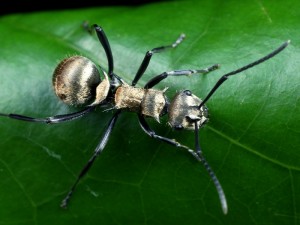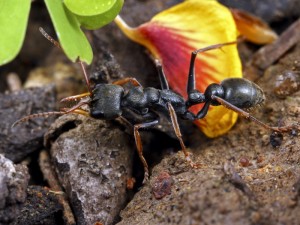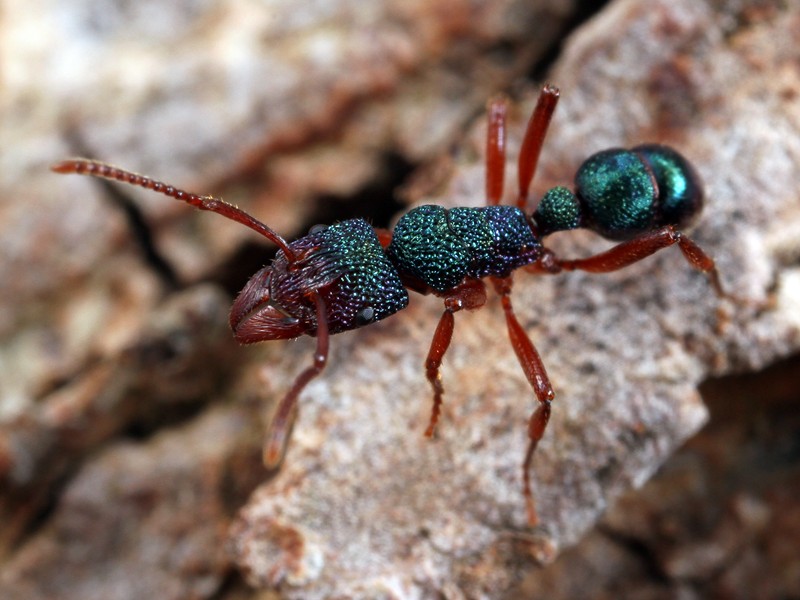Order Hymenoptera, family Formicidae

Ant from the subfamily Formicinae.
At present, there are just under 1,300 described species of ants in Australia, which equates to approximately 15% of the known species worldwide. It’s great to know we have so many species in this country, but the downside of this is that I have a lot more to find.
Ants live in colonies ranging in number from a few dozen individuals to many thousands. Their nests can be found almost anywhere – in the soil, amongst rocks, in rotting logs, in shrubs or high up in trees. In most cases, colonies contain a winged queen whose sole function is to maintain the population by laying eggs. Males are also present, but again only for breeding purposes. The worker ants are all sterile females and their duties include taking care of the eggs, larvae and pupae, collecting food, and defending and maintaining the nest.

Aggressive, venomous and very painful.
All ants have mandibulate mouthparts for grasping and dissecting food. Many species have stings, which they use very effectively in disabling intended prey or attacking intruders. For humans, these stings can be mildly irritating or extremely painful or sometimes even fatal in particularly sensitive people. A large number of species don’t have stings, but instead spray formic acid to deter predators or kill prey.
Whilst ants are generally predators and scavengers, some have established interesting relationships with other insects, offering protection in exchange for food. On several occasions I have observed ants tending hopper nymphs, scale insects, or aphids, warding off potential predators while receiving the sweet honeydew secreted by these insects. Some species are known to cultivate fungi in their nests for a ready-made food source.
Ants are one of nature’s true success stories. They can be found in almost any environment and play an important role in maintaining a healthy ecosystem.
~~~~~
Click here to see the Ant photo galleries
~~~~~
